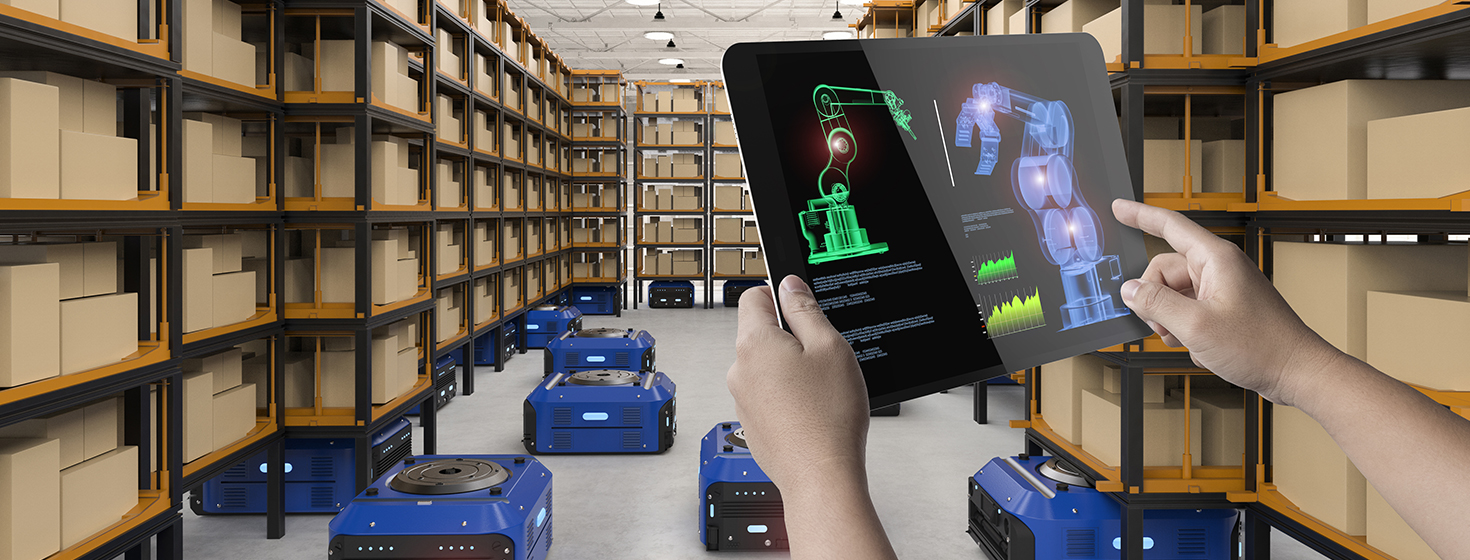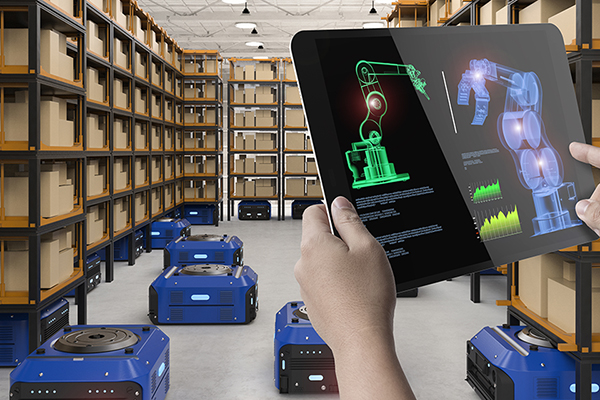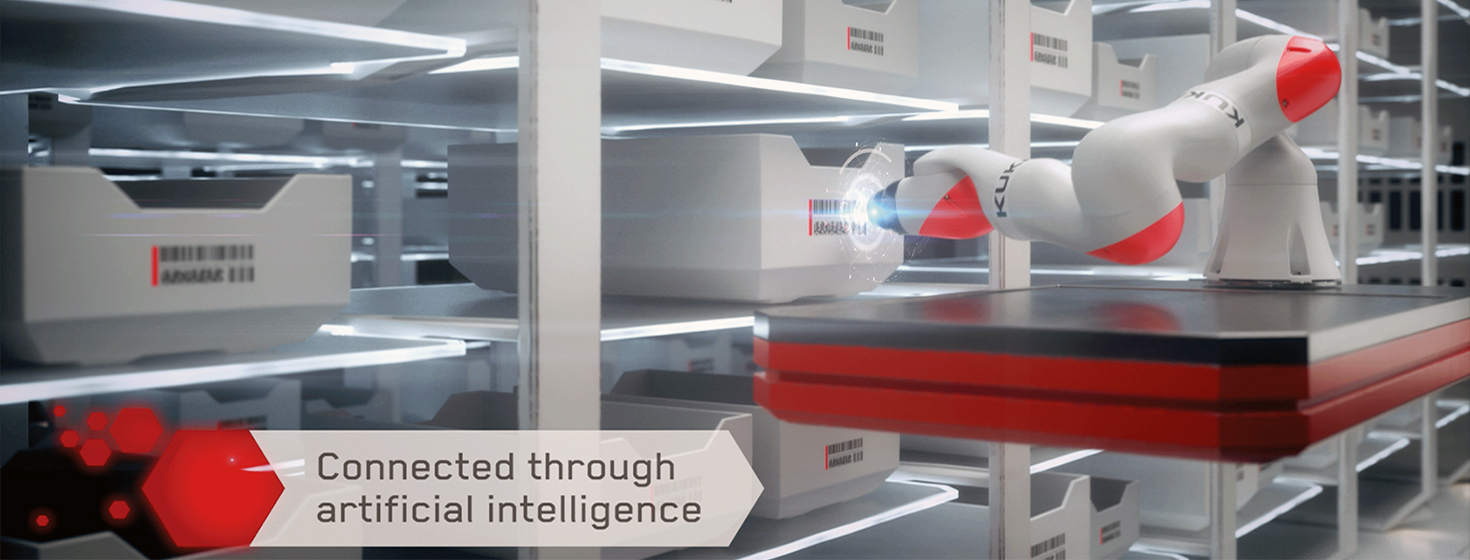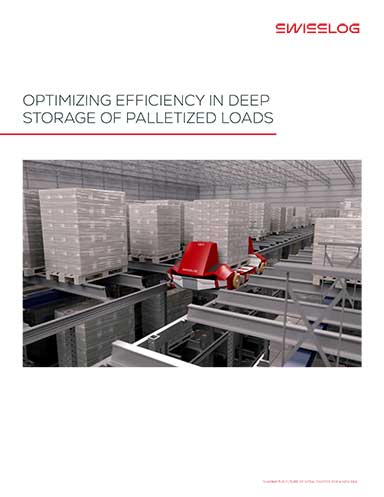The Keys to a Future-Ready Automated Warehouse

Dramatic changes to the warehouse are just beginning. Data-driven, flexible and robotic automation solutions help improve performance today while retaining the agility to adapt to tomorrow’s changes.
Automated Warehouse Solutions
Warehouse technology is now at a pivotal point in an evolution that has been occurring since the start of this century.
Even though automated warehouse solutions have been around for decades, we entered the new millennium with many warehouses still relying primarily on manual processes powered by people and forklifts to move products.
At that time, we were also at the front end of an era of incredible technological innovation that has impacted every area of our lives and virtually every industry, including warehousing.
The driving force for many of the changes that have occurred has been the growth of the internet.
It evolved at breakneck speed from a niche platform that most of us accessed through a dial-up modem to a ubiquitous presence that we rely on daily for everything from communication to financial transactions to networking to entertainment. And, it is continuing to provide the backbone for new advances that are occurring today such as blockchain, virtual and augmented reality and autonomous vehicles.
Of course, the more we use the internet, the more data we generate, and that data is also fueling innovation. Data from connected machines and people is now creating visibility where it previously didn’t exist, increasing the reliability and autonomy of machines and providing new insights to fuel research and development.
Technological Improvements
Meanwhile, there have been parallel developments in the fields of microprocessor technology and robotics. Microprocessors have gotten smaller and more powerful, enabling smart devices and machines. In robotics, incredible progress has been made in vision, gripping and intelligence, creating the potential for robots to take their place alongside humans in a host of industries.
These technological advances have driven broad change across society. Society as a whole has become faster-paced and more demanding, requiring supply chains to move at higher speeds, manage smaller batch sizes, and support a broader range of products.
To deal with these changes, some warehouse operations turned to mechanized sortation and conveyor systems. These systems leveraged advances in warehouse management software to bring a degree of automation to the warehouse that reduced dependence on people while enabling higher throughputs. That was followed by more complex, automated storage and retrieval solutions that also relied heavily on conveyors and sorters.
These mechanized and automated systems continue to operate in many warehouses, but organizations that depend on them face some challenges as current trends in technology and society continue to progress.
The biggest challenge is their lack of adaptability. New packaging designs, changes to the product mix, rapid growth and the need to support new channels are all commonplace occurrences today. Bolted-down, metal conveyors or massive storage and retrieval machines simply don’t adapt easily to these changes. It’s almost impossible to design such a system in a way that will ensure it can meet the demands of an uncertain future, making investments in these systems difficult to justify in the current environment.
In addition, these systems don’t lend themselves to incorporating powerful new technologies that will drive future improvements in warehouse design and operation, such as artificial intelligence, robotics, and virtualization.
That’s why the next evolution of the warehouse requires automation solutions that allow operators to remain competitive in the near-term while enabling flexibility in the long term. That means automation that can be scaled and reconfigured easily, leverages the full power of data to optimize operations in the midst of change and integrates new technologies as they become available.
To understand what this “future-ready” warehouse system looks like, look no further than the Swisslog CarryPick system powered by SynQ.
CarryPick uses small, intelligent robots to “carry” racks of products to pick stations where they can be efficiently picked and packaged. The modular SynQ software platform consolidates data from the robots and material handling equipment to ensure efficient picking provides a comprehensive view of product movement and coordinates robots to seamlessly account for downtime in any individual module.
Additional robots and pick stations can be added at any time to accommodate growth and the whole system can even be picked up and moved to a different warehouse if required. The modular robots can be upgraded as artificial intelligence becomes available and robotic item pickers can replace humans at pick stations as that technology continues to mature.
It’s always tricky to predict the future, but it is clear today that the future warehouse must be flexible, data-driven and robotic. That future is available today in the form of intelligent, modular automation.
Related: Envisioning & Planning the Future Warehouse of 2030
Related White Paper
Improving Warehouse Performance while Maintaining Future Flexibility
As warehouse operators plan for a future that is difficult to predict, building around the pillars of data-driven, flexible and robotics help ensure their investments not only pay dividends in the short term but can carry them well into the future. Download Now!
Article Topics
Swisslog News & Resources
Walmart chooses Swisslog AS/RS and software for third milk processing facility Walmart and Swisslog Expand Partnership with New Texas Facility Swisslog gives live demonstration of ItemPiQ latest evolution Cardinal Health at-Home Solutions automates from shelf to patient Inside Cardinal Health at-Home: Getting the right products out the door at the right time Retail distribution closes in on the customer Automated storage on the move into 2024 More SwisslogLatest in Warehouse|DC
Microsoft Unveils New AI Innovations For Warehouses Spotlight Startup: Cart.com is Reimagining Logistics Walmart and Swisslog Expand Partnership with New Texas Facility Taking Stock of Today’s Robotics Market and What the Future Holds U.S. Manufacturing Gains Momentum After Another Strong Month Biden Gives Samsung $6.4 Billion For Texas Semiconductor Plants Walmart Unleashes Autonomous Lift Trucks at Four High-Tech DCs More Warehouse|DC















